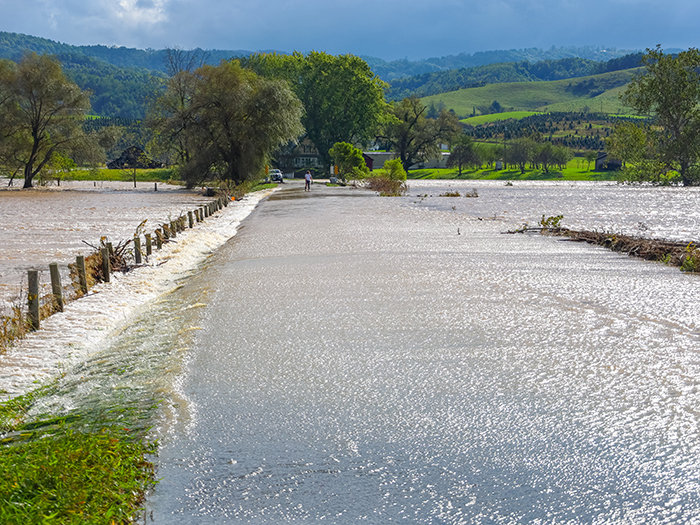Navigating the Storm: Effective Strategies for Natural Disaster Preparedness and Recovery
2025 has already seen significant natural disasters — from the LA wildfires leaving over $29.7 billion in damage behind to recent spring storms, including blinding dust, wildfires and deadly tornadoes that caused mass destruction through the central and southern U.S.
As countless individuals grapple with the long-lasting effects of these calamities, understanding effective disaster preparedness and how to navigate insurance claims following a disaster has never been more critical.
In the wake of recent events, businesses and homeowners alike are looking to expedite the recovery process and accurately assess the losses at hand. Ensuring a firm understanding and structured approach to disaster preparedness, the claims process and assessing losses is essential to minimize financial strain and reduce recovery requirements across disaster types and assets affected.
Getting Ahead of Disaster: Safeguarding Properties
Proactive measures to protect property before a natural disaster can significantly reduce damages and simplify the claims process. Prevention and preparation go hand-in-hand when it comes to minimizing destruction from major disaster events such as wildfires, hurricanes, or floods.
Property owners should first assess the risks associated with their location and take measures to mitigate those risks.
For instance, in wildfire-prone areas, clearing brush and using fire-resistant materials in construction can minimize exposure. In hurricane-prone coastal regions, investing in storm shutters and reinforcing structures can make a significant difference.
For properties in flood-prone areas, installing flood prevention systems like sump pumps and utilizing elevation techniques can offer additional protection.
Equally important is having the right insurance coverage. A standard homeowner’s policy may not cover specific risks such as floods or wildfires. In these cases, additional endorsements or higher coverage limits may be necessary.
Ensuring your coverage is tailored to the specific risks in your area will safeguard your property and can provide peace of mind before disaster strikes.
To ensure claims are filed promptly and efficiently following a disaster, property owners should have a clear understanding of their insurance policy through their insurance brokers and keep an extra copy stored in a secure location outside their home or property.
When it comes to the comprehensiveness of claims, it is crucial to maintain an updated inventory of belongings – although it may seem excessive, photographing high-value items once a year serves as essential proof, potentially saving you considerable time and stress in light of an unforeseen disaster.
Emergency Preparedness Plans
No one ever thinks they will be the one affected by a natural disaster. However, when it strikes, having an emergency preparedness plan in place can ease the situation significantly. Both homeowners and business owners should develop plans that include evacuation routes, emergency contacts, and steps to secure vital documents.
When disaster strikes, filing an insurance claim can feel overwhelming, especially as individuals and businesses race to restore their properties. Efficiently navigating the claims process is critical to ensure timely compensation and smooth recovery.
The first step after a disaster is documenting the damage. Taking photos or videos of all affected areas and keeping a detailed list of losses—including personal property, infrastructure, and business operations—is vital. These records will serve as important evidence to support the claim.
Next, contacting the insurance company as soon as possible is crucial. Many insurers offer emergency hotlines or claims portals for catastrophic events. Reporting damages promptly helps avoid delays, so it is essential to have the policy number and a list of affected items readily available.
While waiting for the adjuster, property owners should take reasonable measures to prevent further damage. Boarding up windows, covering roofs, and stopping leaks can prevent further destruction. Keep receipts for temporary repairs, as these expenses may be reimbursed as part of the claim – and ensure any repairs follow the insurer’s guidelines to avoid complications.
Understanding one’s policy is key, especially regarding deductibles and coverage limits. Catastrophe policies often carry higher deductibles or unique clauses for specific events. Clarifying these details before a disaster can prevent unpleasant surprises when making a claim.
When the adjuster arrives to assess the damage, it is advisable to accompany them during their inspection to ensure an accurate evaluation. If the assessment appears inaccurate, hiring an independent adjuster for a second opinion can provide assurance that the claim reflects the full extent of the damage.
Assessing Losses and Maximizing Recovery
Often the most challenging stage of the recovery process is assessing losses and ensuring that the payout from the insurance company accurately reflects the true extent of the damage – both tangible and intangible.
- Businesses
For businesses, it is important to factor in losses related to interrupted operations. Business interruption coverage can replace lost income during the downtime caused by a disaster. Detailed accounting records and expert testimony are essential for businesses to demonstrate the financial impact and secure an appropriate claim payout.
When it comes to repairing or replacing damaged property, the temptation to replace items with new equivalents is understandable. However, depreciation plays a significant role in insurance payouts, so repairing damaged items instead of replacing them may lead to a better financial outcome.
- Homeowners
For homeowners, Additional Living Expenses (ALE) coverage can help cover costs if displaced from the home. Keeping receipts for temporary accommodations, meals, and other necessary expenses is essential, as coverage limits and durations vary by policy.
Natural disasters often leave lingering effects on property values, particularly in areas that are repeatedly impacted by similar events and weather patterns. Homeowners and business owners should consider long-term market trends and property depreciation when assessing the overall impact on property value – and understanding if repairs will restore the property’s value or if further mitigation efforts are needed.
- Disagreements and Claim Disputes
In cases where disagreements arise regarding damage assessments or payout amounts, individuals have the right to dispute their claim. Filing an appeal or seeking legal advice can help resolve such disputes and ensure fair compensation.
By understanding one’s policy, providing strong evidence and proper documentation, disagreements can often get resolved – securing the compensation needed for recovery and asset replacement. &










